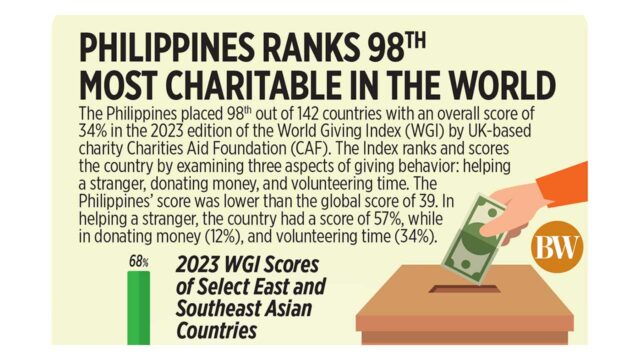What exactly do we want to happen in the West Philippine Sea? Doubtless, the countless protests and notes verbales given, the military capacity building measures undertaken, and the security treaty alliances secured are all well and good. And they are indeed good and necessary measures. The question is: for what purpose and to what end?
Because through the years China has built 800 artificial structures of varying sizes on the Spratlys, Mischief Reef, Subi Reef, and Fiery Cross, as well as depriving our fishermen from not insignificant swathes of our seas. Which begs the question: where exactly are we going with our diplomatic, military, economic, and other security efforts?
Do we demand, ultimately, a reversion to the situation prevailing on Jan. 22, 2013, when the Philippines filed a case against China? Or is it July 12, 2016, when we won that case and thus had our territorial claim forever solidified, at least from the legal jurisprudence point of view? Or do we look to the circumstances prevailing on April 8, 2012, the day that the Philippines began a standoff with China in over Scarborough Shoal. Or should it start from 1995, when it was first discovered that the Chinese built structures on Mischief Reef?
Or is our resigned objective to merely restrain China, recognize the areas they have taken, and be happy with what we can then keep? Or — even more depressingly — do we keep allowing China to forever find ways to slice away at our sovereignty, like an ever-diminishing pie?
Which leads to another — and related question — and that is: is there any act by China that we can categorize as truly unacceptable? A “red line” that if crossed necessitates — be it on grounds of national security or national honor — that we actually resort to military measures as part of our inherent right to self-defense?
The Philippines or at least its vessels, servicemen, and fishermen, have been subjected to being rammed, water cannoned, and even had lasers pointed at them. And yet it is understandable, even commendable, that President Ferdinand Marcos, Jr. has kept a cool head amidst all that.
And yet, the question does linger: What do we consider unacceptable “aggression” that would require the Philippines to respond with retaliatory countermeasures or self-defense?
Our constitutional system, for better or worse, puts on the shoulders of one individual — the President — the decision on whether the Philippines goes to war. Our Congress can only declare that we are in a “state of war” and whether we reach that state depends singularly on the President as the “Commander-in-Chief.”
There is, of course, United Nations General Assembly Resolution 3314, that defines “aggression” as the “use of armed force by a State against the sovereignty, territorial integrity or political independence of another State, or in any other manner inconsistent with the Charter of the United Nations, as set out in this Definition.” Article 3 of that Resolution goes on to give examples of what may consist of aggression:
a.) The invasion or attack by the armed forces of a State of the territory of another State, or any military occupation, however temporary, resulting from such invasion or attack, or any annexation by the use of force of the territory of another State or part thereof;
b.) Bombardment by the armed forces of a State against the territory of another State or the use of any weapons by a State against the territory of another State;
c.) The blockade of the ports or coasts of a State by the armed forces of another State;
d.) An attack by the armed forces of a State on the land, sea or air forces, or marine and air fleets of another State;
e.) The use of armed forces of one State which are within the territory of another State with the agreement of the receiving State, in contravention of the conditions provided for in the agreement or any extension of their presence in such territory beyond the termination of the agreement;
f.) The action of a State in allowing its territory, which it has placed at the disposal of another State, to be used by that other State for perpetrating an act of aggression against a third State;
g.) The sending by or on behalf of a State of armed bands, groups, irregulars or mercenaries, which carry out acts of armed force against another State of such gravity as to amount to the acts listed above, or its substantial involvement therein.
A cursory read should make one ponder if whether paragraphs “c” and “d,” particularly in relation to UN Charter Article 2.4, have been violated in relation to the West Philippine Sea. It all depends on how one interprets “blockade” and “attack,” which normally under international law are left to the discretion of the country claiming self-defense.
The problem, clearly, of declaring a “red line” is that we have to stand by it and then do what we say we’ll do. Doing an “Obama” (as was the case in Syria) would be catastrophic.
Nevertheless, while clearly no one wants to go to war, yet with so much traffic going on in the disputed areas, drawing such a red line (and this has to be said: not necessarily to be declared publicly) and contemplating measures to address the permutations that could conceivably happen afterwards is something that needs to be decided on sooner rather later.
Jemy Gatdula read international law at the University of Cambridge and is a Philippine Judicial Academy lecturer for constitutional philosophy and jurisprudence.
https://www.facebook.com/jigatdula/
Twitter @jemygatdula




















